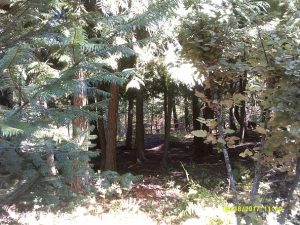How to Make It Back Safe from the Woods
How to Make It Back Safe from the Woods
 Hiking is lots of fun, but most people spend very little time thinking about the things that can go wrong. We’re so used to being safe in our day-to-day lives that we cannot conceive anything bad happening to us. The fact that most us of have never experienced extreme survival situations has a lot to do with our reluctance to take precaution measures when going to toe woods.
Hiking is lots of fun, but most people spend very little time thinking about the things that can go wrong. We’re so used to being safe in our day-to-day lives that we cannot conceive anything bad happening to us. The fact that most us of have never experienced extreme survival situations has a lot to do with our reluctance to take precaution measures when going to toe woods.
Bad idea. Many things can happen in the wilderness that can injure us… or worse. Right now, they may be just news for you that happen to other people, but who’s to say they’ll never happen to you?
In this article, we’re going to look at some of the things you can do to avoid accidents. We’ll talk about tools and gear, sure, but the wilderness skills we’ll mention are much more important for you to make it out alive.
#1. Be Aware of Your Surroundings and Don’t Get Lost
If you get lost and all you have with you is a cell-phone, you many not able to call for help. If your phone’s battery dies or whether you’ll have no signal for you get help, don’t be surprised… be prepared.
Some of the ways to ensure you find your way back or that others find you:
- have a cell-phone charger and/or an extra battery
- have a hardware signal booster for your phone
- have a flare gun that to signal your location to others
- let someone know where you’ll be before you leave, so they come looking for you if need be)
- be aware of your surroundings (oddly-shaped rocks, large trees etc.) so you can go back if you get lost
- have colored duct tape that you can use to mark your trail
 Many believe the best thing to do when you’re lost is to stay put. If you don’t know where you’re going, this is indeed the best thing to do, although this may mean making shelter and starting a fire and even spending the night. If that’s the case, you should be very careful in choosing your camp site and how you protect it.
Many believe the best thing to do when you’re lost is to stay put. If you don’t know where you’re going, this is indeed the best thing to do, although this may mean making shelter and starting a fire and even spending the night. If that’s the case, you should be very careful in choosing your camp site and how you protect it.
Even if you won’t have cell-phone signal, you’ll still be able to establish satellite connection for your GPS maps. There’s nothing special you need to do, most smartphones have this function. The only thing you should do is download the maps of the area you’re exploring (for offline use).
#3. Means to Keep Warm and Fight the Cold and the Flu
One time I was supposed to go hiking, I got sick hours before the trip. Since temperatures were extremely low (below 10F or -15C), I would’ve surely gotten ill. I know that because I got pretty sick just by staying inside the home and taking medicine.
I can’t help but wonder what would have happened if I had gotten sick a little later? No doubt I would’ve had to go back to camp, but it’s important to have items in your backpack to keep warm and fight the cold:
- warm clothes
- extra pairs of socks and an extra jacket
- an emergency blanket
- a rain poncho to avoid being exposed to wind and rain
- a thermometer
- medicine such as aspirin and paracetamol in your first aid kit
#3. Basic First-Aid kit and Knowledge
Though I am not a doctor, I can tell you having a few essential items can prevent a lot of bad things from happening. The last time I used my first aid kit, I got a few minor cuts. Lucky I had plenty of band-aids in my first aid kit.
Tweezers, bandages, hand sanitizer and dressings are just a few of the things you will need. Consider more serious accidents such as falling or twisting your leg. For these, you’ll also need the knowledge to properly take care of them, before you’re given proper medical attention.
You can watch youtubes to learn how to do them but the best way would be to take a first aid class, and then refresher courses every year.
#4. Personal Protection
Bears and wild boars re just a few of the things you may encounter out there. You need to not only be aware of your surroundings (so you’re never taken by surprise) but to also have the weapons to protect yourself should you have no choice but to fight for your life. Consider:
- setting trip-wire alarms around your camp
- bear spray
- a hatchet (you’ll need it for other tasks as well)
- a folding bow
- and, of course, a firearm, if it’s legal where you live
The End
I think it’s obvious by now that there are many dangers that await hikers and campers. If you google, you’ll find plenty of hiking stories that ended tragically. The best thing you can do is prepare for all of these scenarios before you actually go, and to ask your group to do the same.
How to Make It Back Safe from the Woods Lost safe Skills survival wilderness Woods


One Response
One of the most effective ways to prevent getting lost is to periodically turn around and study your back trail. your landmarks can look considerably different when looking at them from the opposite side.